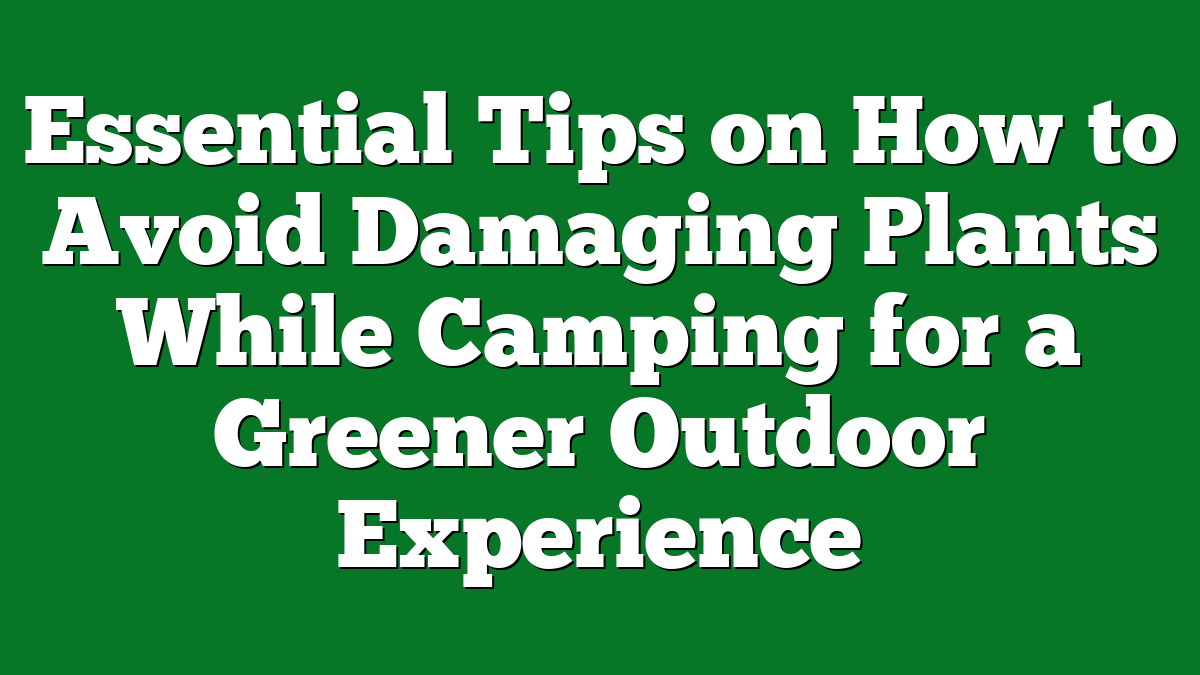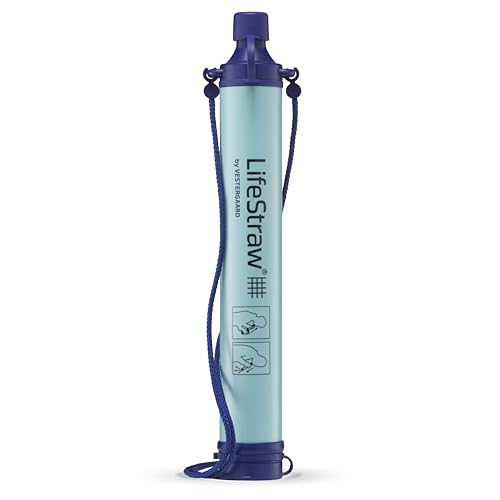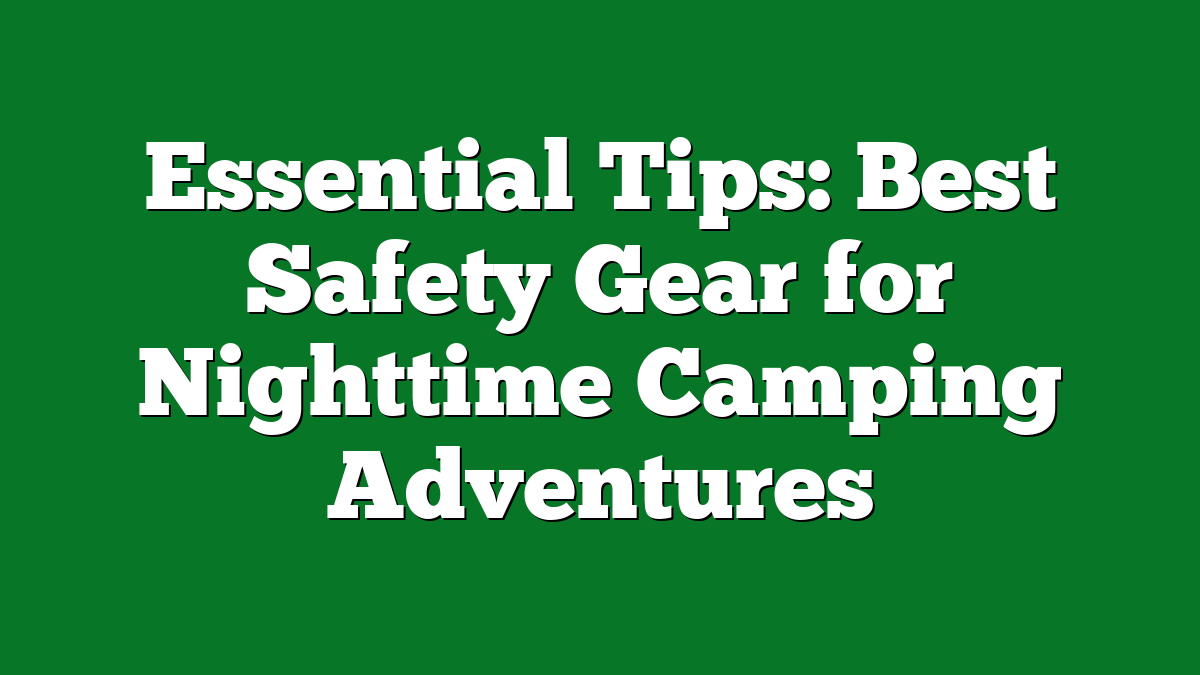Camping in nature is one of my favorite ways to unwind and connect with the great outdoors. There’s something magical about waking up to the sound of rustling leaves and chirping birds. But as much as I love exploring, I’ve learned that our adventures can sometimes come at a cost to the environment, especially when it comes to the plants around us.
Understanding the Importance of Plant Preservation
I cherish every camping trip I take in nature’s embrace. The thrill of exploring new trails and the solace found in the stillness of the forest reminds me of the critical role plants play in our ecosystem. Preserving plant life not only supports wildlife habitats but also maintains the beauty of the landscapes I enjoy.
Plants stabilize soil, reduce erosion, and produce oxygen. They create essential habitats for countless creatures, from birds to insects. Losing even a single species can shift the balance within an ecosystem, disrupting other organisms. When I hike or set up camp, I aim to leave no trace, ensuring future generations experience the same joys I do.
In addition to protecting nature, preserving plants enhances my outdoor experience. Healthy, vibrant plants often signal clean air and a thriving ecosystem, creating a more enjoyable environment for camping and hiking. Understanding the importance of plant preservation motivates me to make responsible choices when outdoors.
Preparing for Your Camping Trip
Preparation sets the stage for a responsible and enjoyable camping adventure. By knowing more about the local flora and packing the right gear, I can minimize harm to plants and enhance my experience in nature.
Researching Local Flora
Understanding the plants in the area transforms my camping experience. I start by identifying native species, including trees, shrubs, and wildflowers. Knowing which plants are endangered or protected safeguards fragile ecosystems. I use resources like local hiking guides, botanical apps, or websites dedicated to flora specifics. Additionally, I look for information about common plants that may be toxic or invasive. Instead of picking flowers or gathering plant materials, I focus on appreciating them in their natural habitat, ensuring that I leave no trace on the landscape.
Packing Essential Gear
Packing wisely plays a crucial role in avoiding damage to plants and preserving the environment. I prioritize lightweight equipment, such as biodegradable soap, to minimize ecological impact. I also include a sturdy pair of hiking boots to reduce soil compression and erosion when traversing trails. Using a portable camp stove instead of open fires limits the risk of burning surrounding vegetation. Furthermore, I carry reusable containers for food and water, eliminating the need for single-use plastic that can harm wildlife. Each item I take contributes to a lightweight, responsible setup that protects the wilderness while enhancing my adventure.
Best Practices While Camping
Camping allows me to immerse myself in nature while ensuring I protect the plants that contribute to its beauty. Here are some best practices that help minimize environmental impact.
Setting Up Camp Safely
Choose a designated campsite where possible, as these areas often have established sites that minimize damage to surrounding flora. If a campsite isn’t available, set up camp at least 200 feet away from water sources to protect delicate ecosystems and avoid soil erosion. Use a durable ground cover, like a tent footprint or tarp, to reduce direct contact with the ground and prevent soil compaction. I always ensure my fire pit is in a designated area or use a camp stove to avoid damaging the soil and nearby plants.
Minimizing Foot Traffic
Stay on existing trails to minimize your impact on plant life. Avoid creating new paths, as this can lead to vegetation loss and soil degradation. When hiking or moving around camp, I keep to a narrow track to reduce the area I disturb. Encourage others to do the same. If I need to gather firewood, I opt for dead and downed branches, ensuring no live plants are harmed in the process. This approach not only protects the environment but enhances my connection to nature by encouraging me to observe and appreciate the local flora.
Leaving No Trace Principles
Embracing nature and its beauty comes with a responsibility to protect it. Following the Leave No Trace principles not only preserves the environment but ensures future campers enjoy the same pristine landscapes.
The Seven Principles of Leave No Trace
- Plan Ahead and Prepare
Planning a trip involves understanding the terrain and local flora. I research the area to avoid camping in sensitive habitats, ensuring minimal impact.
- Travel and Camp on Durable Surfaces
I stick to established trails and designated campsites. This practice protects fragile ecosystems and prevents unnecessary soil compaction.
- Dispose of Waste Properly
I pack out what I pack in, including trash and leftover food. For human waste, I use designated restroom facilities or follow local guidelines to minimize environmental impact.
- Leave What You Find
Collecting natural souvenirs damages ecosystems. I appreciate plants, rocks, and artifacts in their natural settings, taking only memories and photographs.
- Minimize Campfire Impact
I use a camp stove for cooking to avoid the harmful effects of campfires. When I do build a fire, I ensure it’s in a designated fire pit and keep it small.
- Respect Wildlife
I observe wildlife from a distance, using binoculars instead of approaching them. This keeps animals safe and helps maintain natural behaviors.
- Be Considerate of Other Visitors
I keep noise levels down and yield to other hikers on trails. Respecting fellow campers ensures everyone can enjoy their experience in peace.
By adhering to these principles, I not only protect plants and wildlife but also enhance my adventures in the great outdoors. Making responsible choices enriches my camping experience while ensuring nature thrives for generations to come.
Helpful Tips for Plant Care
Taking care of plants while camping enriches our outdoor experience and keeps nature thriving. Here are a few essential tips to help protect our green friends during our adventures.
Identifying Vulnerable Plants
Identifying vulnerable plants is crucial. Familiarize yourself with local flora before heading out. Focus on endangered species, unique ferns, and wildflowers that require protection. Use apps or field guides to learn about these plants. When hiking or setting up camp, keep an eye out for signs of fragility, such as stunted growth or limited numbers. If you spot these plants, steer clear to avoid damaging their delicate ecosystems.
Educating Fellow Campers
Educating fellow campers contributes to responsible outdoor living. Discuss the importance of plant preservation with friends and family. Share ideas on respecting nature, like avoiding picking flowers and ensuring group members stay on designated trails. Encourage each other to follow the Leave No Trace principles. Having open conversations about protecting plant life creates a collective sense of responsibility, making everyone more aware of their impact on the environment.
Conclusion
Camping is all about enjoying the beauty of nature while being responsible stewards of the environment. I’ve found that by taking a few extra steps to protect plants and ecosystems, my outdoor experiences become even more rewarding.
Whether it’s choosing the right campsite or respecting local flora, every little action counts. I love sharing these practices with fellow campers to foster a community that values preservation.
Let’s all make an effort to leave nature as we found it so future generations can create their own magical memories outdoors. Together, we can ensure that our adventures don’t come at the expense of the beautiful landscapes we cherish.











